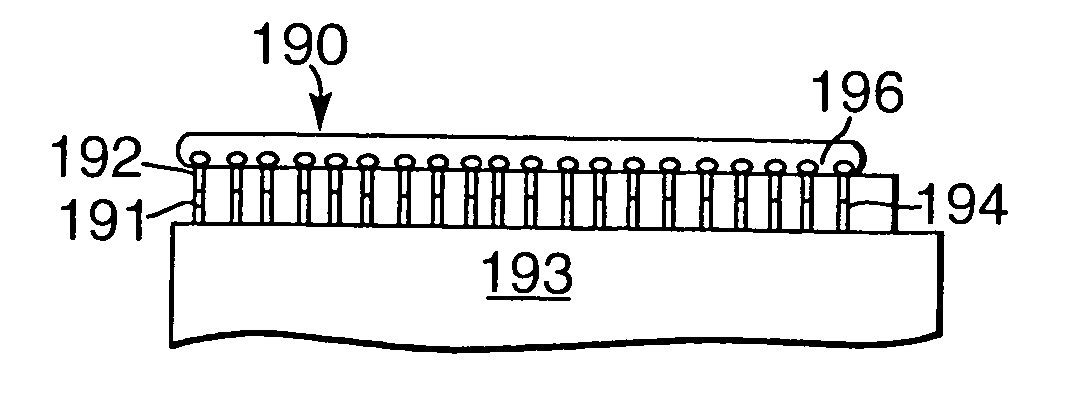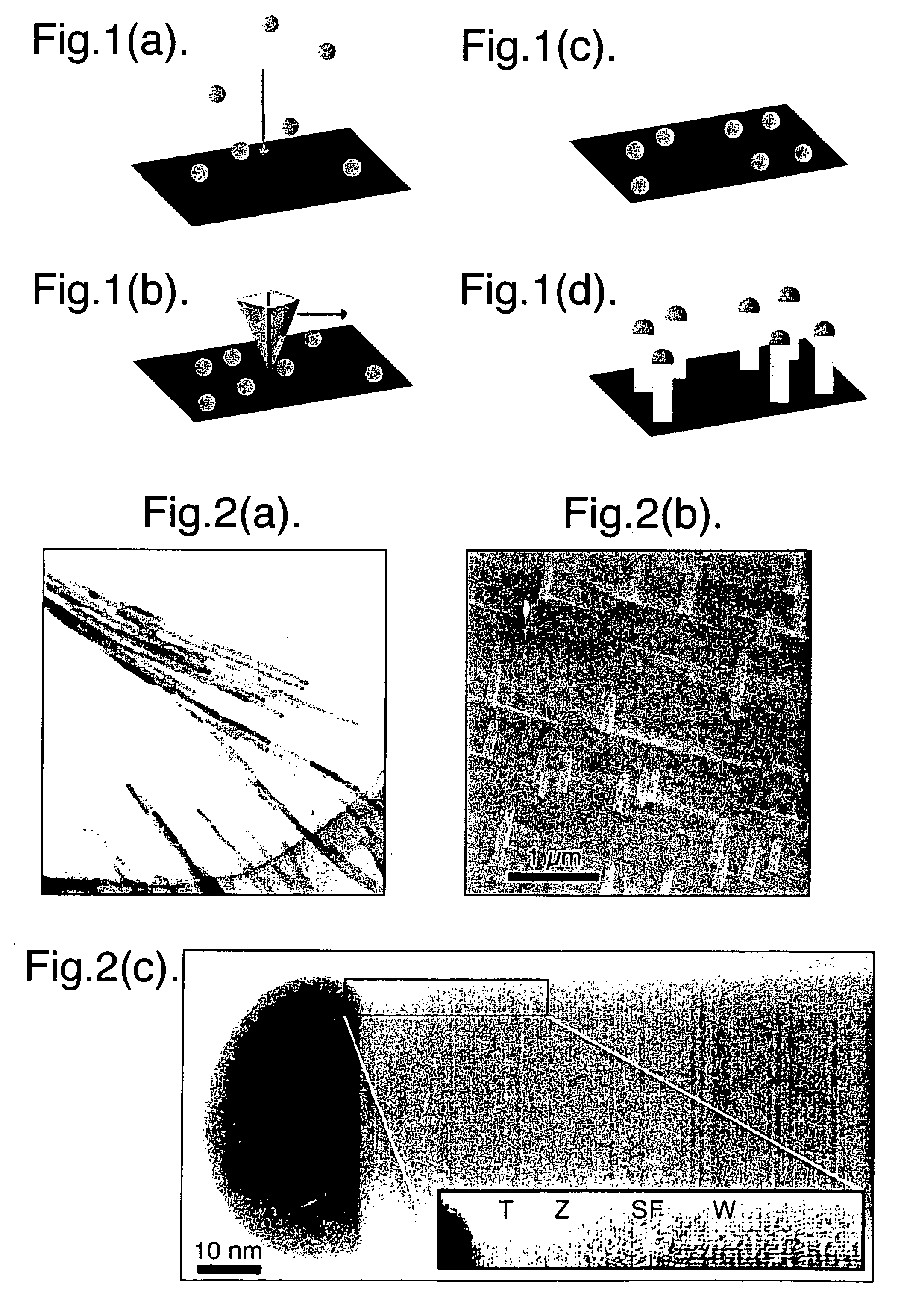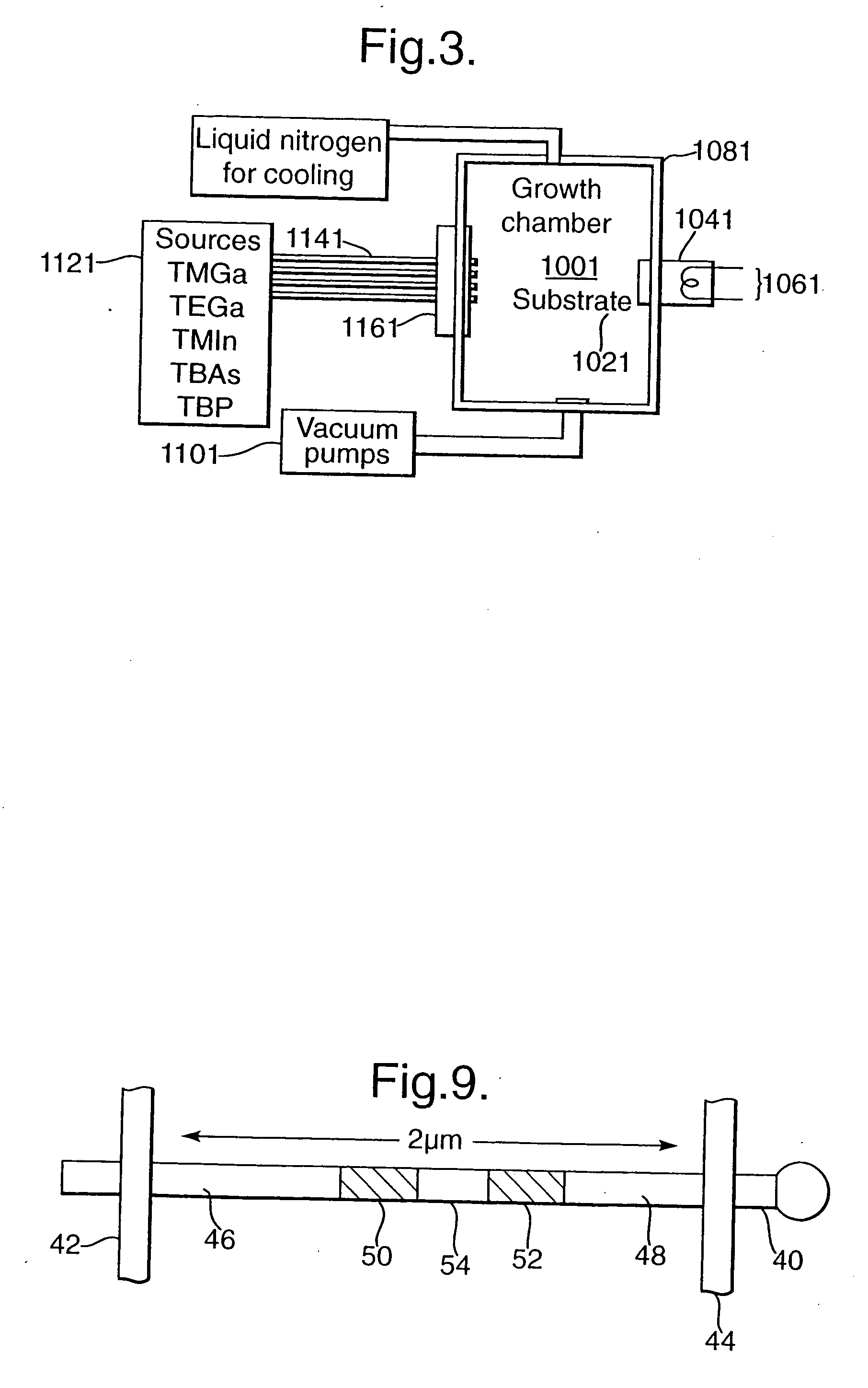Nanostructures and methods for manufacturing the same
a nanostructure and nanotechnology, applied in nanotechnology, photovoltaic energy generation, crystal growth process, etc., can solve the problems of difficult control of size and surface coverage separately, virtually impossible to achieve a low coverage, and may provoke a considerable change in the separation of energy states
- Summary
- Abstract
- Description
- Claims
- Application Information
AI Technical Summary
Benefits of technology
Problems solved by technology
Method used
Image
Examples
example 1
[0110]FIGS. 1 and 3 show whiskers of predetermined sizes grown from several III-V materials, in particular, GaAs whiskers with widths between 10 and 50 nm. These whiskers can be grown rod shaped with a uniform diameter, in contrast to earlier reports on epitaxially grown nano-whiskers, which tended to be tapered, narrowing from the base towards the top. As catalysts, size-selected gold aerosol particles were used, whereby the surface coverage can be varied independently of the whisker diameter.
[0111] The whisker width in general is slightly larger than the seed particle diameter. This is mainly due to two factors: First, the gold particle incorporates Ga and possibly As from the substrate, which makes the particle grow. Second, when the particle melts, the base diameter of the liquid cap will be determined by the wetting angle between the alloy and the substrate surface. Simple assumptions give a widening of up to 50%, depending on temperature and particle diameter, and introduce a...
example 2
[0118] Conditions for growth of nanowhiskers allow the formation of abrupt interfaces and heterostructure barriers of thickness from a few monolayers to 100s of nanometers, thus creating a one-dimensional landscape along which the electrons move. The crystalline perfection, the quality of the interfaces, and the variation in the lattice constant are demonstrated by high-resolution transmission electron microscopy, and the conduction band off-set of 0.6 ev is deduced from the current due to thermal excitation of electrons over an InP barrier.
[0119] In this method, the III-V whiskers are grown by the vapor-liquid-solid growth mode, with a gold nanoparticle catalytically inducing growth, in the manner described above. Growth occurs in an ultrahigh vacuum chamber 100, FIG. 3, designed for chemical beam epitaxy (CBE). The rapid alteration of the composition is controlled by the supply of precursor atoms into the eutectic melt, supplied as molecular beams into the ultrahigh vacuum chambe...
PUM
| Property | Measurement | Unit |
|---|---|---|
| thickness | aaaaa | aaaaa |
| size | aaaaa | aaaaa |
| diameter | aaaaa | aaaaa |
Abstract
Description
Claims
Application Information
 Login to View More
Login to View More - R&D
- Intellectual Property
- Life Sciences
- Materials
- Tech Scout
- Unparalleled Data Quality
- Higher Quality Content
- 60% Fewer Hallucinations
Browse by: Latest US Patents, China's latest patents, Technical Efficacy Thesaurus, Application Domain, Technology Topic, Popular Technical Reports.
© 2025 PatSnap. All rights reserved.Legal|Privacy policy|Modern Slavery Act Transparency Statement|Sitemap|About US| Contact US: help@patsnap.com



